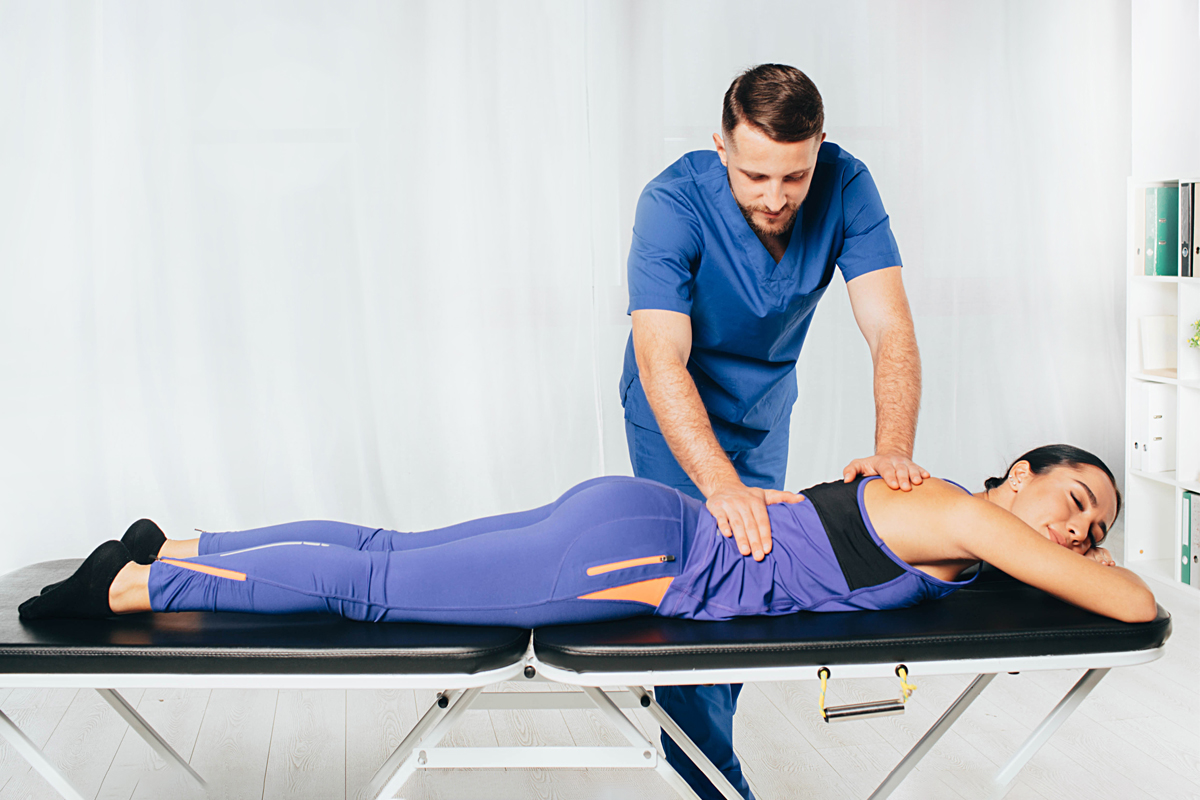Effective Physical Therapy Treatments for Lower Back Pain
By Dr. Frank J. Scerbo, PT, DPT ///
Lower back pain is one of the most common ailments affecting people worldwide. Whether due to poor posture, injury, or chronic conditions, it can significantly impact your quality of life. The symptoms of low back pain vary a great deal. Your pain might be dull, burning, or sharp. You might feel it at a single point or over a broad area. Low back pain can occur along with muscle spasms or stiffness. Sometimes, it spreads into one or both legs.
There are three different types of lower back pain:
• Acute: pain lasting less than three months.
• Recurrent: acute symptoms that ease up, then come back.
• Chronic: pain lasting longer than three months.
1. Understanding the Causes of Lower Back Pain
Before diving into treatment options, it’s essential to understand the common causes of lower back pain. The causes can be broadly categorized into:
• Muscle Strain: Overuse or sudden movement can strain the muscles and ligaments in your back.
• Herniated Discs: A slipped or ruptured disc can press on nerves, leading to pain.
• Degenerative Disc Disease: As discs age, they lose flexibility and can cause pain.
• Spinal Stenosis: Narrowing of the spinal canal can put pressure on nerves, leading to discomfort.
• Poor Posture: Prolonged sitting or standing with improper posture can strain the lower back.
Fortunately, physical therapy offers a range of effective treatments that can alleviate pain, restore mobility, and prevent future problems. This blog post will explore some of the most effective physical therapy treatments for lower back pain.
2. Manual Therapy
Manual therapy is a hands-on approach where physical therapists use their hands to manipulate, mobilize, and massage the muscles and joints. Techniques such as spinal manipulation, mobilization, and soft tissue massage can help:
• Reduce Pain: Manual therapy can reduce discomfort by alleviating muscle tension and improving blood flow.
• Improve Mobility: It helps restore joint and muscle flexibility, enabling better movement.
• Promote Healing: Manual therapy can accelerate healing by increasing circulation.
For many patients, manual therapy provides immediate relief and can be an essential part of a comprehensive treatment plan.
3. Therapeutic Exercises
Therapeutic exercises are customized programs to strengthen the muscles supporting your lower back. These exercises typically include:
• Core Strengthening: Strong core muscles support the spine and reduce the strain on the lower back.
• Stretching Exercises: Targeted stretches can relieve muscle tension and improve flexibility.
• Stabilization Exercises: These focus on maintaining a neutral spine during movement, which can prevent further injury.
Consistency is key with therapeutic exercises. Regular practice can significantly improve pain levels and overall back function.
4. Electrotherapy
Electrotherapy uses electrical currents to reduce pain and promote healing. Common types of electrotherapy used in PT include:
• Transcutaneous Electrical Nerve Stimulation (TENS): TENS uses low-voltage electrical currents to block pain signals and stimulate the release of endorphins, the body’s natural painkillers.
• Ultrasound Therapy: Ultrasound waves penetrate deep into the tissues, promoting circulation and reducing inflammation.
• Iontophoresis: This technique uses a mild electrical current to deliver medication directly to the affected area, reducing pain and inflammation.
Electrotherapy is non-invasive and can be particularly effective when combined with other PT treatments.
5. Education and Ergonomic Training
One of the most effective ways to prevent and manage lower back pain is through education. Physical therapists often provide:
• Posture Training: Teaching patients how to maintain proper posture during daily activities to reduce back strain.
• Ergonomic Advice: Guidance on how to set up workstations and adjust seating to support a healthy back.
• Body Mechanics Training: Educating patients on how to move and lift objects safely to avoid injury.
These educational components empower patients to take control of their condition and make lifestyle changes that can prevent future pain.
6. Heat and Cold Therapy
Heat and cold therapy are simple yet effective treatments for lower back pain. They can be used individually or alternately:
• Heat Therapy: Heat can relax muscles, increase blood flow, and reduce stiffness.
• Cold Therapy: Cold packs can reduce inflammation and numb sharp pain, making it a good option after an acute injury.
Physical therapists often incorporate these therapies into treatment plans, especially for pain management and to prepare the muscles for further therapy.
7. Mind-Body Techniques
Lower back pain isn’t just a physical issue; it can also be influenced by stress and mental health. Techniques such as:
• Yoga and Pilates: These practices improve flexibility, core strength, and mindfulness, which can reduce pain and prevent recurrence.
• Relaxation Techniques: Breathing exercises, meditation, and progressive muscle relaxation can reduce stress, which may contribute to muscle tension and pain.
Mind-body techniques complement traditional PT treatments by addressing the psychological aspects of pain, promoting overall well-being.
Lower back pain can be debilitating, but with the right physical therapy treatments, it is possible to manage and even overcome this common issue. Combining manual therapy, therapeutic exercises, electrotherapy, education, and mind-body techniques.
At Scerbo Physical Therapy & Sports Rehabilitation, our physical therapists can create a comprehensive and personalized treatment plan that addresses the root causes of your pain and promotes long-term recovery.
If you’re experiencing lower back pain, contact us to make an appointment with one of our expert physical therapists. Together, we can explore these effective treatment options and take the first step towards a pain-free life.

